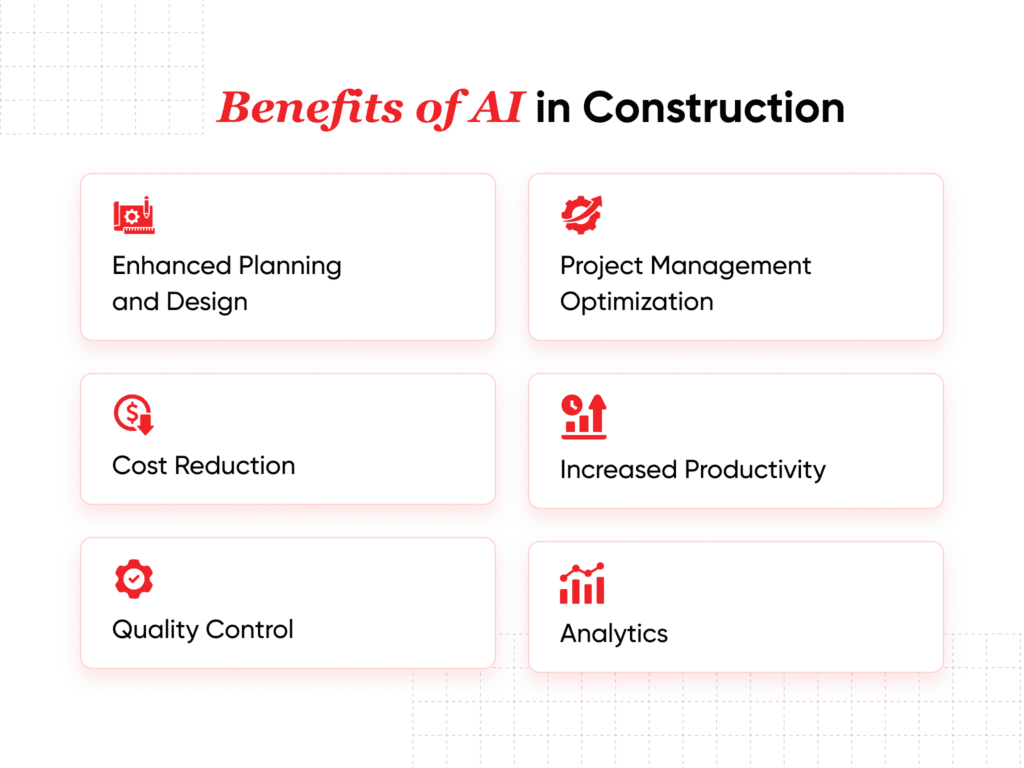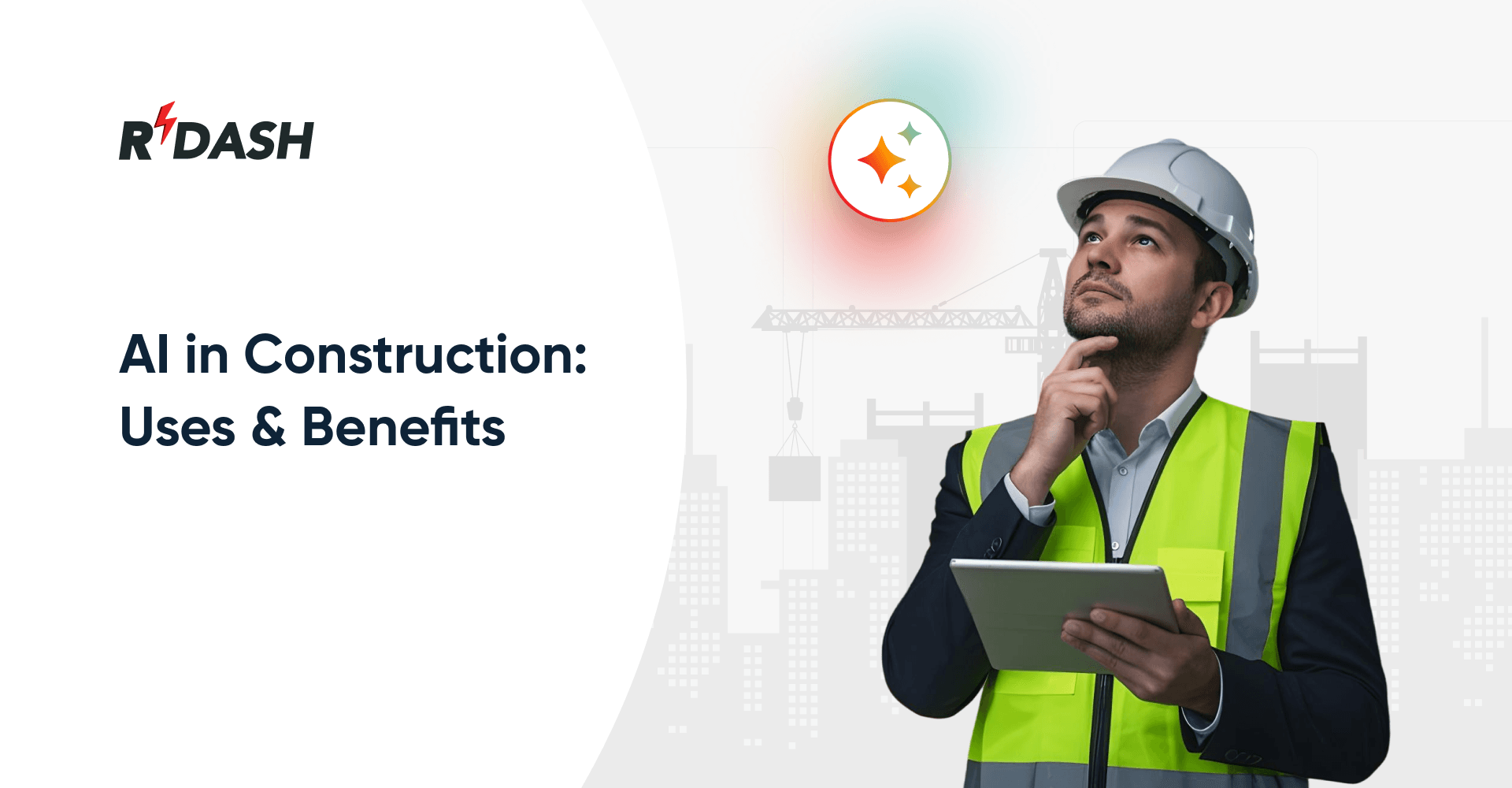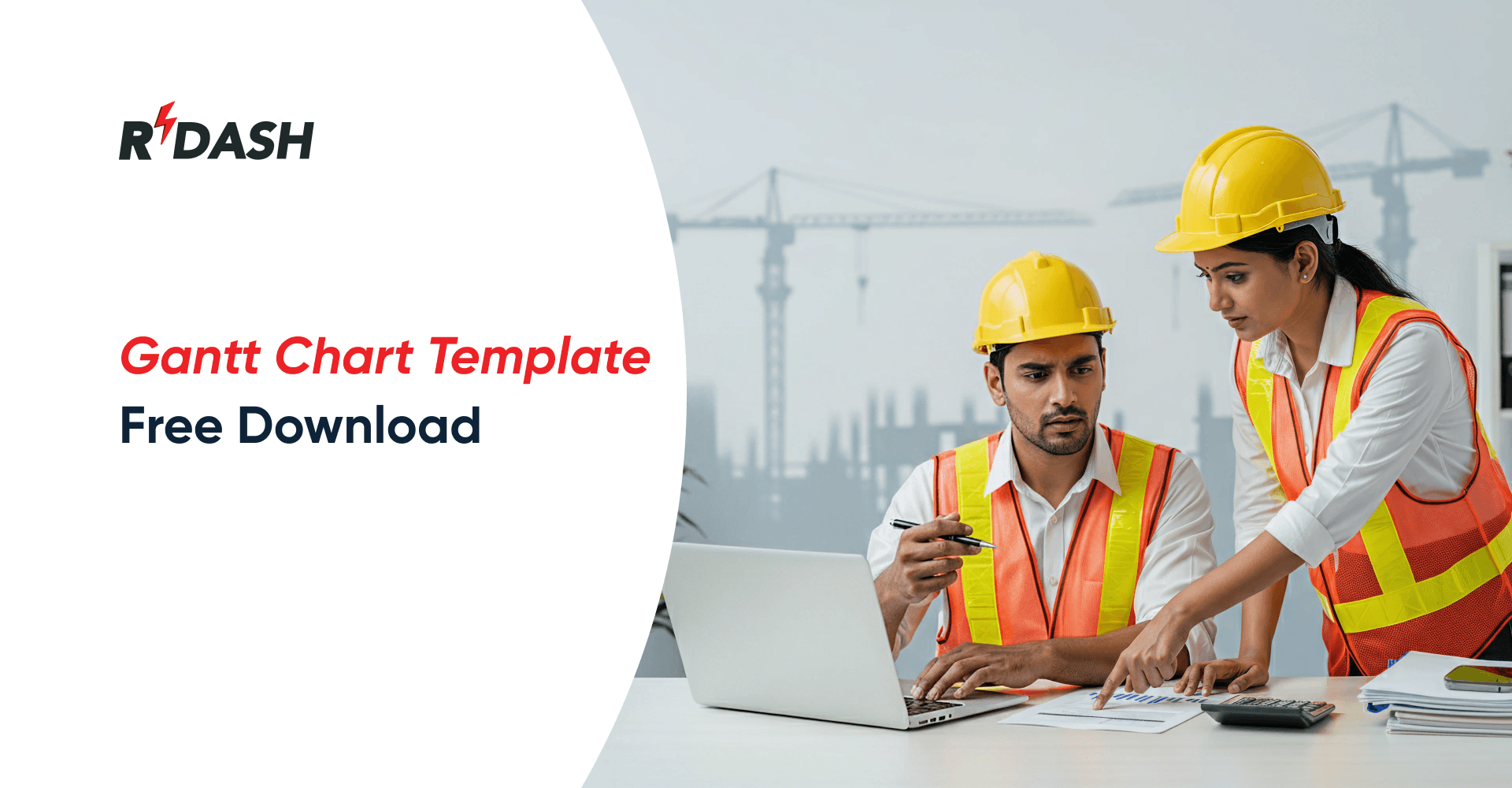What is AI in construction?
AI in construction adds value across all stages of a construction project – from early planning to post-construction upkeep. Its ability to process data and provide smart insights helps companies improve how they design, build, and maintain structures. For instance, an AI chatbot can save time on simple tasks, while predictive tools may help avoid major delays and costs by suggesting changes to schedules.
However, the construction industry has been slow to adopt AI. That’s partly because projects involve many different teams and vendors, making it harder to introduce new tools. Whether a company can embrace AI depends on its budget, the skills of its team, and how open it is to trying new technology.
Benefits of AI in construction
Using AI in construction offers many benefits for builders, contractors, and project owners. Here are some of the biggest advantages:

Enhanced Planning and Design
AI improves both the speed and accuracy of project planning. By analyzing data from past and ongoing projects, AI tools can compare different scheduling options and provide clear insights on timelines, resource needs, and costs. It also helps teams explore design variations quickly, offering suggestions based on factors like budget, energy use, and structural integrity. AI-powered 3D models can evaluate designs alongside electrical, mechanical, and plumbing layouts, as well as work sequences, helping teams boost quality and reduce costs.
Increased Productivity
Construction projects often fall behind schedule because of unexpected delays or miscommunication. AI helps by giving real-time updates and insights. For instance, AI-powered scheduling tools can adjust plans when something changes on site, making it easier to keep work moving.
By taking over routine tasks like entering data and creating reports, AI lets workers spend more time on tasks that matter most. This boosts overall productivity and helps teams get more done in less time.
Cost Reduction
Staying within budget is one of the toughest parts of any construction project. AI can analyze data from past projects to help teams create more accurate estimates and identify where costs can be cut.
AI also makes it easier to track spending as work progresses. If there are signs of overspending, teams can take action sooner to avoid going over budget. Over time, better cost control means more profitable projects.
Project Management Optimization
AI brings major improvements to project management. It can speed up scheduling by using project details to generate baseline timelines within hours instead of days. This helps teams begin work sooner. AI also helps distribute resources like labor and equipment more effectively, flags possible cost overruns based on complexity or risks, and can forecast delays such as material shortages. If a supplier can’t deliver, AI can even suggest alternative solutions to keep the project on track.
Quality Control
Delivering high-quality work is critical in construction. AI-powered tools can monitor work as it happens and flag issues before they turn into bigger problems. For example, AI can analyze photos from the site and compare them with the design plans to check if the work matches what was planned. If something looks off, the system can alert the team so they can fix it right away. This extra layer of oversight means fewer defects, less rework, and better results for clients.
Analytics
AI can process large amounts of project data and turn it into practical insights. For example, AI can look at project histories and find trends that help teams plan future jobs more accurately.
By using AI-driven analytics, companies can make smarter decisions, spot risks early, and find ways to improve how they work. These insights can lead to better performance, stronger safety practices, and more successful projects overall.
How is AI used in construction?
AI in construction is making a big impact by improving how teams plan, manage, and analyze their projects. When it comes to project scheduling, AI helps create more realistic timelines by considering details like weather forecasts and material deliveries. If delays happen, AI can quickly adjust the plan and suggest the best way to get things back on track. For project management, AI tools keep an eye on daily progress and safety by tracking site activities in real time.
They can spot risks early and send alerts to project managers so problems can be fixed before they cause bigger issues. This means teams can work more efficiently and stay organized, even on complex jobs. AI-powered analytics also help construction companies learn from past projects by turning large amounts of data into useful insights. For example, AI can find patterns that show which tasks often run late or which suppliers are unreliable. These lessons help managers plan smarter, cut costs, and deliver better results in the future. Overall, AI brings more control, better decision-making, and a smoother process to construction projects from start to finish.
Project management tools built especially for the construction industry can make managing projects much easier and more effective. These tools help teams stay organized, reduce delays, and keep everyone on the same page. RDash is one such solution that stands out as an all-in-one construction project management platform. It’s designed so that project managers, site teams, clients, and contractors can use it easily. With features tailored to real construction needs, RDash helps deliver projects on time, within budget, and with fewer headaches.
FAQs
What is an example of AI in construction?
One clear example is AI-powered progress tracking. Some companies use drones and cameras combined with AI to take photos of the job site. The AI compares these images with project plans to check if work is on schedule and matches the design.
What are the common barriers to implementing artificial intelligence?
The main hurdles to using AI are its cost, not having enough trained people, and teams being unsure about new technology. Many businesses worry about how much they need to spend at the start and whether their workers will know how to use the tools. Helping teams feel confident with new tech is essential.
What are the typical limitations of AI systems?
AI systems depend on having good data. If the data is wrong or incomplete, the results can be unreliable. Also, AI cannot entirely replace human experience or decision-making – it’s a helpful tool, but people still need to review and act on what it finds.






